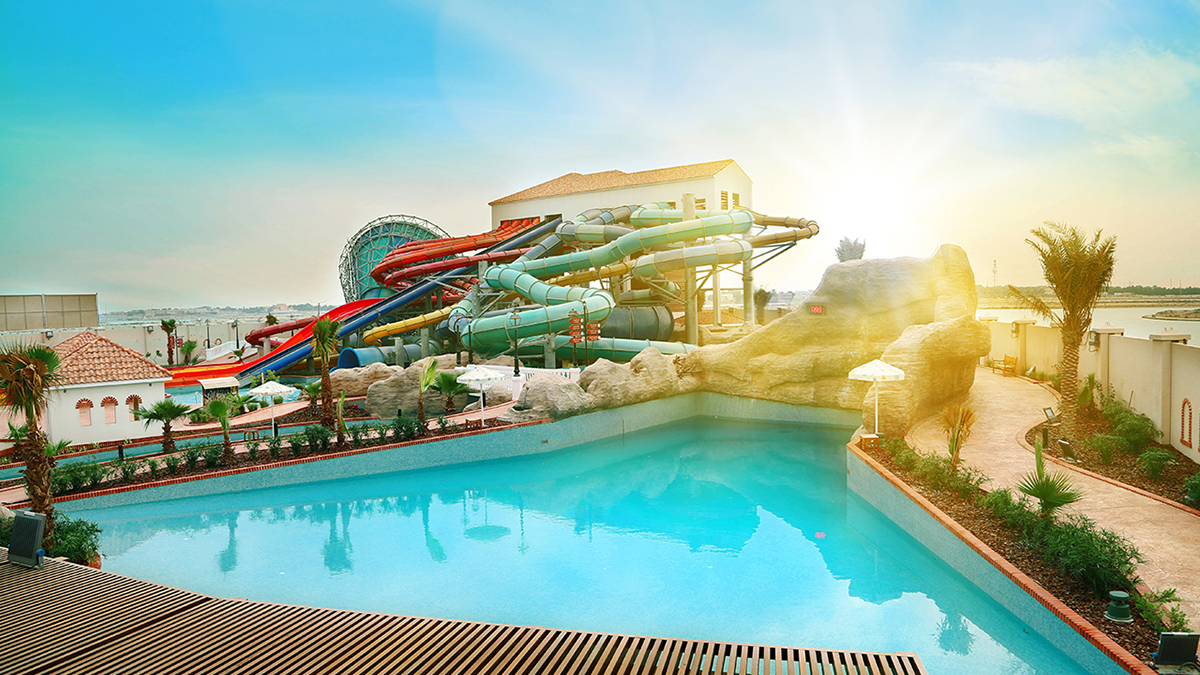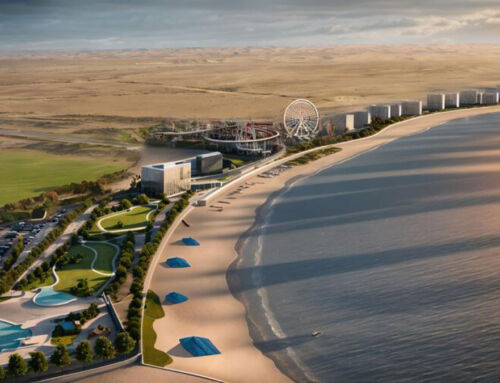Climate is a determining factor in the operation of a water park. In predominantly cold latitudes, such an operation is reduced in time to the warm months, and only if it is an indoor water park will it extend throughout the year. Sometimes, in such geographies, water parks combine a heated indoor part, open to the public 365 days a year, with an outdoor part, closed during the rigours of winter. Another option for extending the water park season during the cold season is to heat the water in the pools. This is precisely the approach taken by Loopagoon Waterpark, located in Dhahran on the east coast of Saudi Arabia.
Dhahran’s climate and its impact on the waterpark’s operation
Dhahran experiences long, extremely hot summers and cool, dry winters. Temperatures range from 10°C in winter to 43°C in midsummer. Consequently, the best times to enjoy leisure and tourism in Dhahran are from mid-March to mid-May, and from early October to late November. So, to extend the season into the winter months, Loopagoon Waterpark has implemented a system to heat the water in its pools. To carry out the project, Amusement Logic’s expertise and technical capacity has been brought in to carry out the project.

Characteristics of the water heating system
The aim of the system is to maintain a comfortable temperature in the pools during the cold months. The project must compensate for energy fluctuations, due to the interaction between the water and the atmosphere. The weather is a crucial variable influencing these fluctuations, so it is necessary to adjust the water temperature according to the season.
After studying the factors involved, the following winter water temperatures were established:
– 26 °C (78.8 °F) for that of the wave pool.
– 28 °C (82.4 °F) for the water in the lazy river and down the slides.
– 30 °C (86 °F) for the paddling pool and Splash Pad.
Factors causing heat loss in swimming pool water
In order to maintain the set temperatures, it is essential to consider several factors that cause heat loss in swimming pool water:
–Evaporation losses: swimming pool water evaporates until the vapour pressure at its surface equals (i.e. is no longer higher than) the existing partial vapour pressure in the ambient air (or, in other words, until the saturation state of the ambient air is reached). The process by which part of the water in the pool passes into the atmosphere in the form of vapour involves a heat exchange between the two. In this way, the evaporating water takes the necessary energy from the pool water, which cools down accordingly.
–Radiation losses: but in addition, the pool water exchanges heat in the form of radiant energy with the surrounding surfaces.
–Convection losses: at the same time, heat exchange takes place as a result of the temperature difference between the water and the air.
–Water renewal losses: finally, due to evaporation, the use of pool cleaners and the cleaning of filters, the pool water must be renewed periodically. In the context of this water heating system, if this periodic supply is carried out with cold water, then heat loss will occur.

Amusement Logic’s technical solution
So, once we had calculated the volume of losses for each of the pools in the Loopagoon water park, we were in a position to define the heating system. We then decided on the heating power required to maintain the water temperature according to the objective, on the one hand, and the size of the equipment involved in the production and distribution of heat, on the other. With all the available parameters, Amusement Logic defines the configuration of the system of heat exchangers and air-to-water heat pumps, with the most advanced technologies, as well as their location and the distribution pipe network.
With the new water heating system for the Loopagoon Waterpark, we extend its operating season and improve the visitor experience during the winter at the same time.






